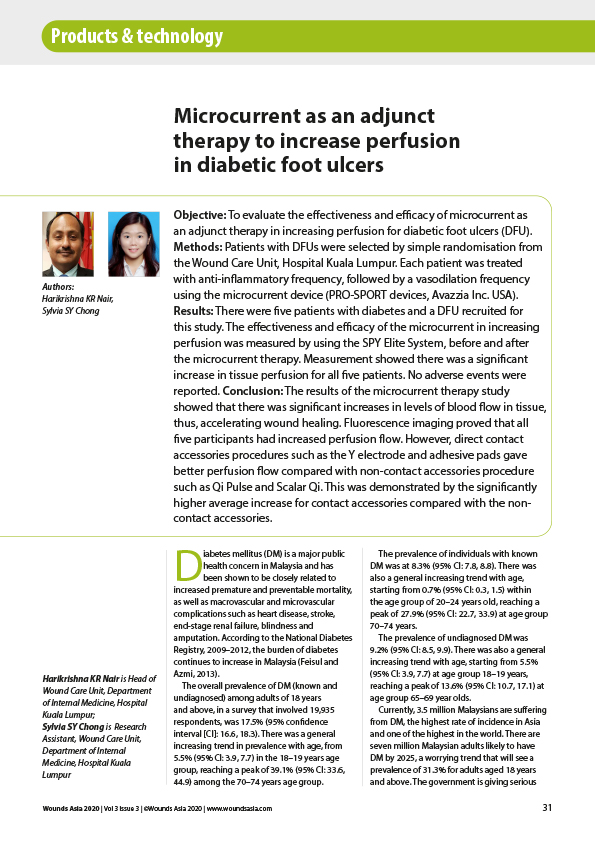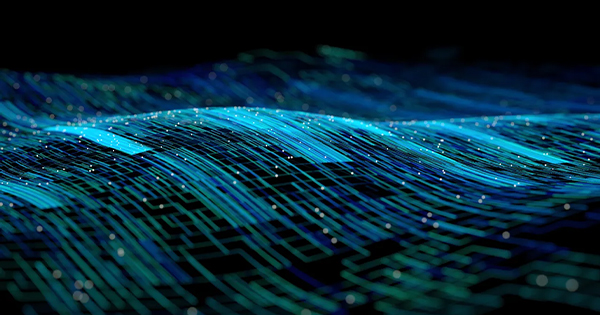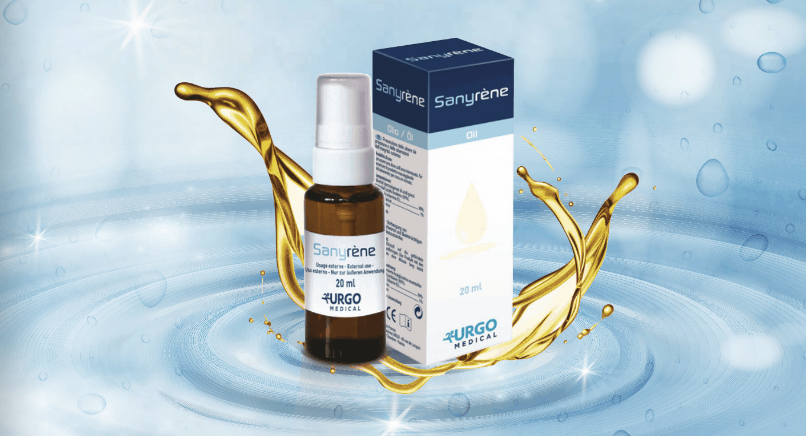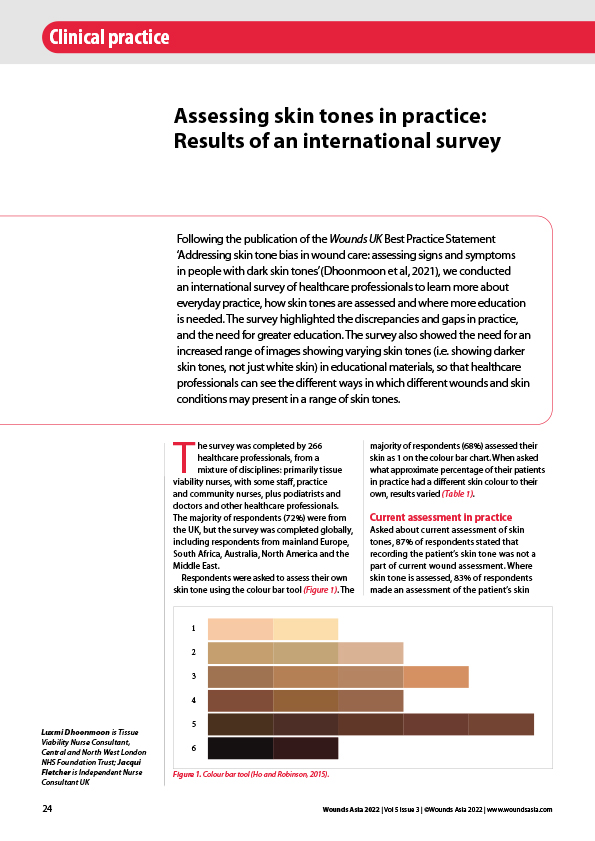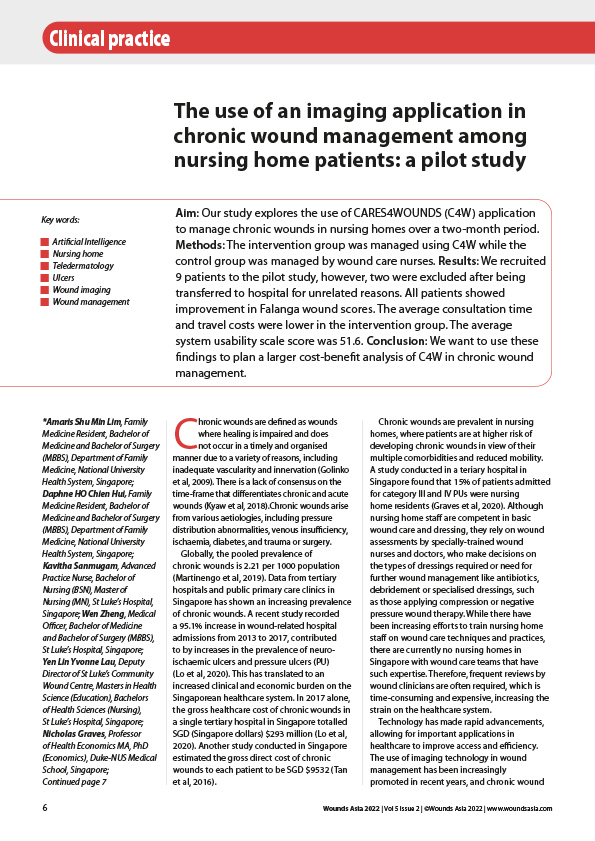Objective: To evaluate the effectiveness and efficacy of microcurrent as an adjunct therapy in increasing perfusion for diabetic foot ulcers (DFU). Methods: Patients with DFUs were selected by simple randomisation from the Wound Care Unit, Hospital Kuala Lumpur. Each patient was treated with anti-inflammatory frequency, followed by a vasodilation frequency using the microcurrent device (PRO-SPORT devices, Avazzia Inc. USA). Results: There were five patients with diabetes and a DFU recruited for this study. The effectiveness and efficacy of the microcurrent in increasing perfusion was measured by using the SPY Elite System, before and after the microcurrent therapy. Measurement showed there was a significant increase in tissue perfusion for all five patients. No adverse events were reported. Conclusion: The results of the microcurrent therapy study showed that there was significant increases in levels of blood flow in tissue, thus, accelerating wound healing. Fluorescence imaging proved that all five participants had increased perfusion flow. However, direct contact accessories procedures such as the Y electrode and adhesive pads gave better perfusion flow compared with non-contact accessories procedure such as Qi Pulse and Scalar Qi. This was demonstrated by the significantly higher average increase for contact accessories compared with the noncontact accessories.

